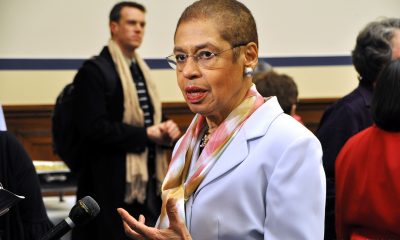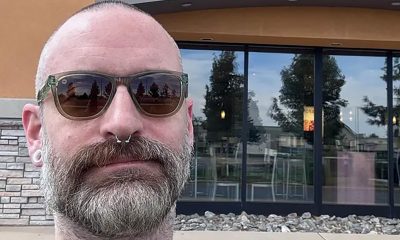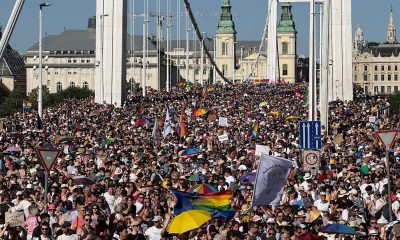Local
Trial begins in Wone murder case
Judge blocks evidence on alleged paralytic drug, S&M restraints

A long-awaited trial opened this week for three gay men implicated in the murder of attorney Robert Wone, who was found stabbed to death inside the men’s Dupont Circle area townhouse in August 2006.
Joseph Price, 39, his domestic partner, Victor Zaborsky, 44, and the couple’s roommate, Dylan Ward, 39, have been charged with obstruction of justice, conspiracy and evidence tampering in connection with Wone’s murder. If convicted on all three charges, the men face a possible maximum sentence of 38 years in prison.
Authorities have yet to charge anyone with the murder itself, a development that has created an air of mystery and intrigue and has captured the interest of the gay community as well as local and national media.
Prosecutors and defense attorneys said they could present 80 or more witnesses and expect the trial to last as long as 10 weeks. Jury selection was scheduled to begin Wednesday at D.C. Superior Court, with opening arguments set for Monday.
Judge Lynn Leibovitz ruled Tuesday against the defense team’s attempt to separate the joint case so that each defendant could be tried individually rather than together in a shared trial.
The defense argued that the men should be tried separately because it would be impossible for prosecutors to avoid violating constitutionally mandated rules of evidence that statements made by one defendant can’t be used against another defendant in a joint trial. But Leibovitz said the defendants’ rights would be protected by strict limits she imposed on the prosecution concerning the introduction of the defendants’ statements about each other.
Defense attorneys were especially concerned about prosecutors’ plans to show jurors videotaped interviews of each of the defendants by homicide detectives conducted shortly after the murder. At Leibovitz’s instruction, prosecutors said they would edit the videos to remove any statements by the defendants that would incriminate a co-defendant.
After months of pre-trial wrangling over the admissibility of evidence, Leibovitz forced prosecutors in the days before the trial began to withdraw several key elements in their case, including allegations that the crime scene was cleaned of blood.
Under pressure that Leibovitz would rule against them and claims by the defense that the government lacked sufficient evidence, prosecutors also agreed not to introduce testimony that Wone may have been immobilized with a paralytic drug or restrained by S&M devices found in the men’s house before being stabbed three times in the chest.
Also excluded was any testimony by police regarding the collection of S&M devices they found in the house, including restraining harnesses, face masks, books about sadomasochism, and a device used to administer an electric shock to a person during sexual activity.
Assistant U.S. Attorney Glenn Kirschner, the lead prosecutor in the case, has said introduction of the S&M devices as evidence was intended to show that Wone might have been restrained at the time he was stabbed.
Kirschner has said the government nonetheless remains confident it has sufficient evidence to prove that the killer “is someone known to the defendants” and that the three men conspired to obstruct the police investigation into the crime.
Kirschner has said he also remains optimistic that the government will demonstrate to the jury that Wone was not murdered by some “unknown, unseen, phantom intruder,” as the defense has alleged.
In pleading not guilty to the charges, the three gay men have said through their attorneys that an intruder entered their house through a rear door while they were asleep and killed Wone.
Wone, a friend of Price since the two attended Virginia’s College of William & Mary, spent the night at the men’s house on Swann Street, N.W., after working late at his nearby office. Wone’s wife, Kathy Wone, and family members have said Wone was straight.
The defendants have retained an experienced and highly regarded team of nearly one dozen defense attorneys, including former prosecutors such as the openly gay former D.C. Attorney General Robert Spagnoletti.
Since Price, Zaborsky and Ward were indicted in the case in 2008, the attorneys have methodically challenged nearly every piece of evidence and legal theory advanced by the government, accusing prosecutors of “manufacturing” a sensational case that isn’t supported by the facts.
In a final series of pre-trial hearings over the past month, Kirschner, chief of the homicide division at the U.S. Attorney’s office, and his smaller team of prosecutors, have sought to defend a case built largely around the aspects of a stabbing death reportedly committed by an outside intruder that were conspicuously missing in the Wone murder.
Citing the autopsy and crime scene findings, prosecutors note that although Wone was stabbed three times in the chest area, including once in the heart, there was hardly any blood on the guest room bed where he was found or on the floor or walls. This prompted prosecutors to conclude in a lengthy arrest affidavit released in October 2008 that someone in the house had “cleaned” the crime scene.
The affidavit points to an autopsy finding that the three stab wounds on Wone’s chest area were surgical-like and undistorted rather than the jagged cuts usually found on a stabbing victim, who would be expected to recoil in pain and move around in an effort to defend himself — even if he were sleeping in a bed, as the defendants say was the case with Wone.
Additionally, there were no defensive wounds on Wone’s hands or arms that are normally found on victims stabbed more than once, who traditionally position their arms to deflect the path of a knife-wielding attacker, prosecutors have said.
The arrest affidavit citing these findings pointed to a theory by the medical examiner that Wone appeared to have been immobilized by a paralytic drug, which likely prevented him from moving during a violent stabbing attack. The autopsy also found several needle marks on Wone’s body that were inflicted before he died, further pointing to the possible injection of a powerful drug before the stabbing.
Yet another autopsy finding of semen in and around Wone’s genital area and rectum prompted prosecutors to initially assert that Wone had been sexually assaulted at the time of the murder.
All of this, prosecutors said, made it clear that Wone could not have been murdered by a burglar or home intruder who entered the house, stabbed Wone and quickly fled.
The defense, however, has argued in pre-trial hearings that the paralytic drug theory should not be introduced as evidence because no such drug could be detected in Wone’s body from chemical tests. The defense also argued that semen is normally found to be secreted when men die and that the government failed to present any evidence that Wone had been sexually assaulted or restrained at the time of the murder.
Instead, defense attorneys announced they plan to call a controversial cardiologist as a witness who will testify that a stab wound to the heart can instantly stop the heart and immobilize the person stabbed. This development, defense attorneys have said, would explain why Wone didn’t move or recoil when stabbed two more times.
The defense said it would also present expert witnesses who will claim the bleeding in Wone’s case was mostly internal, explaining why the crime scene lacked large quantities of blood.
Agreeing with the defense that the government failed to produce sufficient evidence that a paralytic drug was administered, and that Wone was sexually assaulted or restrained by S&M sex devices, Leibovitz either ruled against admission of these theories or persuaded prosecutors not to bring them up at trial.
Kirschner has said the government’s case nevertheless remains strong.
With no evidence of a forced entry, no evidence that anything was taken from the house and no signs that anything was disturbed or disrupted, he has said prosecutors will call on the jury to conclude that an intruder or burglar could not have killed Wone and that the defendants had to know who was responsible for the murder — even if the government doesn’t have sufficient evidence to charge anyone with Wone’s death.
But in a comment at one of the recent pre-trial hearings, lead defense attorney David Schertler called the reasoning “ridiculous,” saying people are killed in the city “all the time” by home invaders and during botched burglaries.
“All you have to do is read the newspapers,” he said.
Virginia
Va. court allows conversion therapy despite law banning it
Judge in June 30 ruling cited religious freedom.
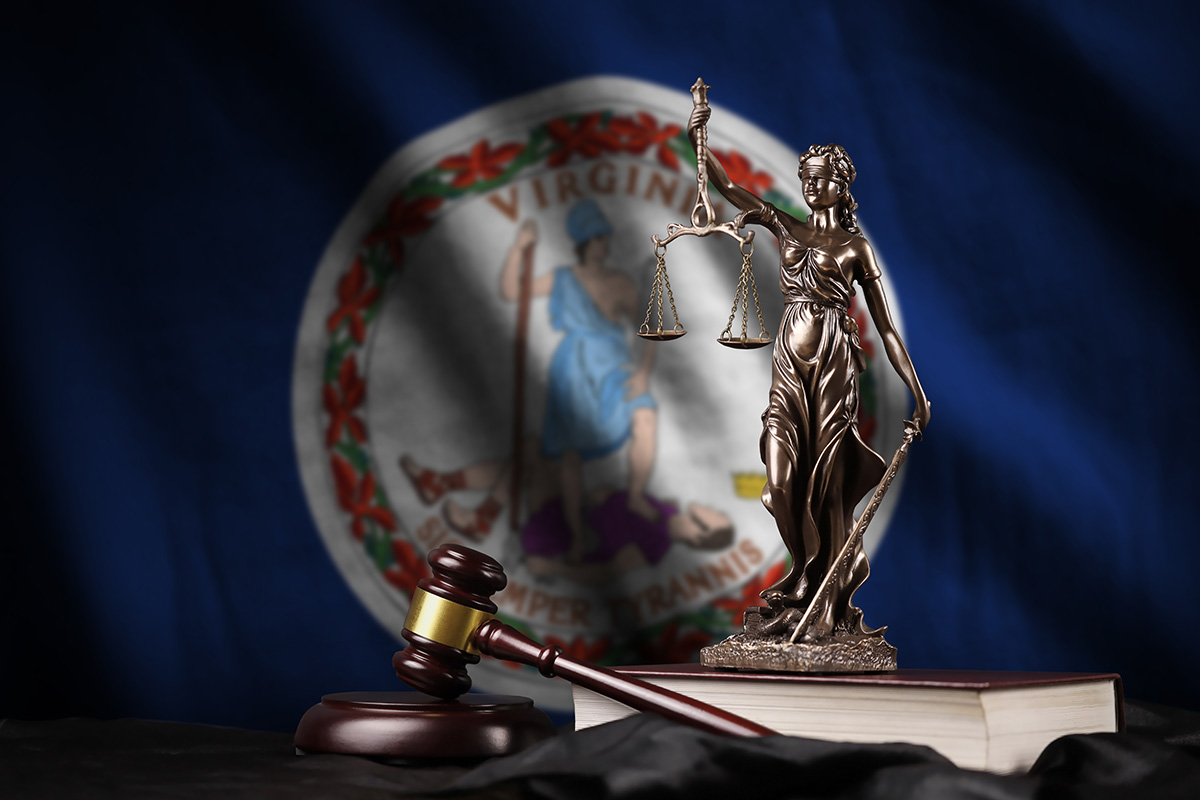
In 2020, the state of Virginia had banned the practice of conversion therapy, but on Monday, a county judge ruled the ban violates the Virginia Constitution and Religious Freedom Restoration Act, allowing the therapy to start once more.
The conversion therapy ban, which can be seen in Va. Code § 54.1-2409.5 and 18VAC115-20-130.14, was overturned on June 30 as a result of two Christian counselors who argued that their — and all Virginia parents’ — constitutional right to freedom of religion had been encroached upon when the state legislature passed the ban.
A Henrico County Circuit Court judge sided with John and Janet Raymond, two Christian counselors represented by the Founding Freedoms Law Center, a conservative organization founded in 2020 following Virginia’s conversion therapy ban. Virginia’s Office of the Attorney General entered a consent decree with FFLC, saying state officials will not discipline counselors who engage in talk conversion therapy.
Conversion therapy, as the legislation described it, is considered to be “any practice or treatment that seeks to change an individual’s sexual orientation or gender identity, including efforts to change behaviors or gender expressions or to eliminate or reduce sexual or romantic attractions or feelings toward individuals of the same gender.” The ban’s reversal will now allow parents to subject their children to these practices to make them align better with their religion.
This decision comes despite advice and concern from many medical and pediatric organizations — including the American Psychiatric Association, American Psychological Association, American Association for Marriage and Family Therapy, and the American Counseling Association, to name a few — all of which denounce conversion therapy as dangerous and harmful to those subjected to it.
The American Medical Association, the largest and only national association that convenes more than 190 state and specialty medical societies, says that “these techniques are the assumption that any non-heterosexual, non-cisgender identities are mental disorders, and that sexual orientation and gender identity can and should be changed. This assumption is not based on medical and scientific evidence,” with attached data indicating people subjected to conversion therapy are more likely to develop “significant long-term harm” as a result of the therapy.
The AMA goes as far as to say that they outright “oppose the use of reparative or conversion therapy for sexual orientation or gender identity.”
FFLC has a clear goal of promoting — if not requiring — conservative ideology under the guise of religious freedom in the Virginia General Assembly. On their website, the FFLC argues that some progressive policies passed by the Assembly, like that of freedom from conversion therapy, are a violation of some Virginians’ “God-given foundational freedoms.”
The FFLC has argued that when conservative notions are not abided by in state law — especially when it involves “God’s design for male and female, the nuclear family, and parental rights” — that the law violates Virginians’ religious freedom.
A statement on the FFLC’s website calls gender dysphoria among children a “contagion” and upholds “faith-based insights” from counselors as equal — in the eyes of the law — to those who use medical-based insights. This, once again, is despite overwhelming medical evidence that indicates conversion therapy is harmful.
One study showed that 77 percent of those who received “sexual orientation change efforts,” or conversion therapy, experienced “significant harm.” This harm includes depression, anxiety, lowered self-esteem, and internalized homophobia. In addition, the study found that young LGBTQ adults with high levels of parental or caregiver rejection are “8.4 times more likely to report having attempted suicide,” with another study finding that “nearly 30 percent of individuals who underwent SOCE reported suicidal attempts.”
Virginia Senate Majority Leader Scott Surovell, a Democrat representing Fairfax, said that the overturning of the ban on religious merit disregards the entire concept of having professionally licensed counselors.
“I have no problem if somebody wants to go look at religious counseling from their priest or their minister, their rabbi, their imam — that’s perfectly fine,” Surovell told the Virginia Mercury. “When somebody goes to get therapy from somebody licensed by the commonwealth of Virginia, there’s a different set of rules applied. You can’t just say whatever you want because you have a license. That’s why we have professional standards, that’s why we have statutes.”
District of Columbia
GenOUT Chorus offers solace, strength to LGBTQ teens
Summer camp held from June 23-27
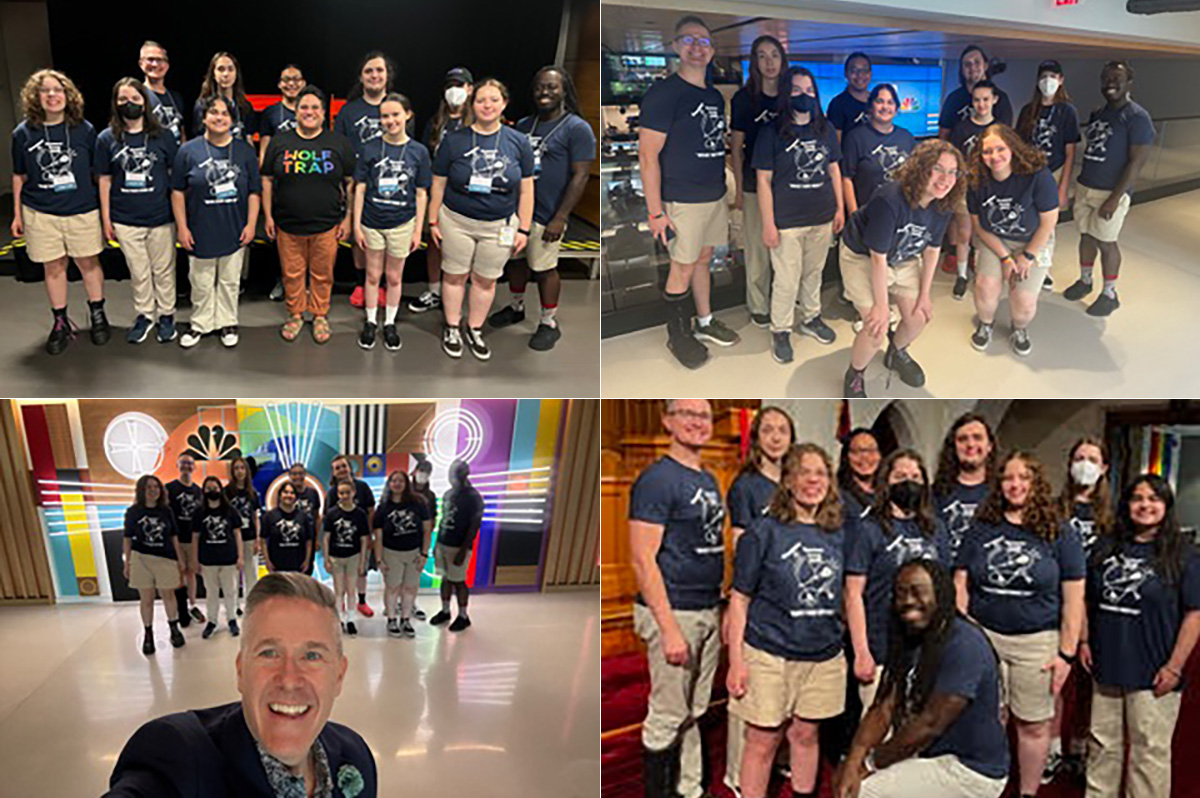
As Pride month draws to a close and Washington begins to take down its rainbow flags and WorldPride decorations, it can be easy to confine the ideas of LGBTQ liberation to June. One historic organization in Washington has been speaking out — or singing out if you will — to ensure that LGBTQ youth are allowed to explore and be themselves every month of the year.
The Gay Men’s Chorus of Washington is one of the oldest and largest LGBTQ choruses in the world. With more than 300 members and more than 40 years in the D.C. LGBTQ community, to say it is an institution would be an understatement.
Beginning in 1981, following an inspiring performance by the San Francisco Gay Men’s Chorus at the Kennedy Center, a group of 18 gay men — led by a “straight” woman and friend of Washington’s gay community, Marsha Pearson — created the GMCW. Since its establishment the organization has only grown in number and relevance within the city. From hosting multiple concerts a year, international equality trips, and creating a dedicated space to “inspire equality and inclusion with musical performances and education,” the GMCW is one of the cornerstone organizations in the Washington LGBTQ community.
One of the most remarkable parts of the GMCW is its youth outreach program and choir: GenOUT. The outreach ensemble specializes in providing a space for Washington’s LGBTQ and allied youth, ages 13-18, to find their voice through song and connect that voice to community. The GenOUT program has been around since 2001, and since 2015 has provided a platform for their voices to be heard — literally — making it the first LGBTQ youth chorus in the Washington area.
The Washington Blade sat down with GenOUT Director C. Paul Heins and member Ailsa Ostovitz to discuss why GenOUT, and more specifically the GenOUT summer camp, which was held from June 23-27, has become an essential space for LGBTQ youth in the D.C. area to find their voice amid less-than-supportive administration and rising anti-LGBTQ rhetoric in the nation.
“This is my 11th season with GenOUT, and also the 11th season with Gay Men’s Chorus of Washington,” Heins said when explaining how he ended up in the director role for the self-selected, no audition required youth outreach ensemble. “I was hired in August of 2014 to start GenOUT. I spent that first fall researching other choruses, figuring out the infrastructure, promoting the chorus, and building relationships with schools, organizations, and faith communities. And then we started in January of 2015 with nine brave singers and since then, we’ve had 150+ singers from 80 or more schools in the DMV participate.”
Ailsa Ostovitz, on the other hand, being in high school had not had as much experience with choirs — yet her commitment and unwavering passion for the work she — and the other performers within GenOUT provide to each other was unmistakable.
“I’ve been a part of the course since April of 2022, and that was like seventh grade— which is wild to think about,” Ostovitz said when reflecting on how long she had been a part of GenOUT. She explained how she had begun to develop a drive for filling leadership roles within GenOUT after gaining valuable experiences and education from the organization.
“This is my first year in leadership,” she added. “The rest of the years, I kind of hung back. I really wanted to — especially last season — kind of put myself in the position of a peer and think ‘What would I want from people that are supposed to represent me to the adults? What would I want out of that?’”
And with those questions in mind, Ostovitz explained she buckled down and worked hard to get to where she is now as a member of the leadership team within the GenOUT choir.
“I spent a lot of time working with my section leader, and, looking up at him and being like, ‘What are you doing now that I can do in the future?’ And so this year, I ran for leadership,” Ostovitz said. “I got section leader, and that was cool. I’ve just spent a lot of time — most of my time in this course — learning leadership skills to kind of help me in all sorts of things in life, because I like to take control of things, and I like doing stuff.”
These leadership skills are just a handful of the things that students like Ostovitz learn while participating in the program. This year’s theme was “Make Them Hear Us!: Empowering LGBTQ+ and Allied Youth Through Music, Media, and Community,” and provided multiple opportunities for GenOUT’s members to engage with new concepts, ideas, and experiences.
From field trips to mentoring opportunities to an end-of-camp performance, it becomes clear when speaking to those familiar with the GenOUT experience: it is not your traditional summer day camp.
“The title of the camp references the anthem that GMCW has sung for many years,” Heins said. “‘Make Them Hear You’ from the musical ‘Ragtime’ encourages us to share important stories — stories that honor the fights that we’ve been fighting, the rights that we have won, affirmations that we seek for every human being, and the focus on media — specifically developing young people’s understandings of the kinds of media that they can access and use to share their voice.”
The camp offers singing and dancing lessons, creative writing exercises, LGBTQ+ history lessons, and open discussions about identity — providing an outlet for students to figure out who they want to be and find their voice.
“What this camp does, I believe, is it helps foster young people’s voices and not only encourages them to speak, but to give them the skills to speak in a way that will be heard meaningfully,” Heins added. “I have noted that youth in queer choruses like GenOUT have said that singing in a chorus allows young people to express themselves more honestly and with greater passion than other forms of expression. They’ve also said that singing with others that understand you on a very deep, profound level, makes the expression much easier and more beautiful. I think that experience is what really makes this a special opportunity for young, LGBTQ and allied people.”
Ostovitz echoed Heins’s sentiment, emphasizing that the space GenOUT provides allows her to feel empowered in ways more than by creating leadership skills that will help her later in life. GenOUT has allowed for her to see the humanity and similarities LGBTQ youth all face in a straight world.
“Joining the chorus and being in this camp, it really gives people a chance to see that every person is going through the same experience you are, on a level of finding your own identity and being confident in that,” Ostovitz said. “It really, really serves a purpose by showing there are still queer people. They’re not fizzling out — young people are queer. We want to use our voices to express what we feel and how things are affecting us, and I think that using music to do that is probably one of the most powerful ways to do that.”
In addition to allowing for internal growth and honing their singing abilities, both Ostovitz and Heins pointed out the other valuable skills students learn while in the GenOUT program. Ostovitz explicitly highlighted the mentorship program GenOUT has with GMCW, and how it has helped students like her figure out their future.
“Because we are so connected with GMCW, we run a mentorship program where, if you want to explore career, identity, whatever, we can connect you with somebody from GMCW,” Ostovitz said. “You get to spend a whole semester with a person working on your voice or your career or your what you want to do in higher education. It’s not only for things related to your queer identity, but it’s also just for life. It’s really cool.”

This year’s theme, centering around media and the many ways people can share their voice, was highlighted through the camp’s field trips to two legacy media organizations — WAMU and NBC Washington — and a discussion with staff from the Washington Blade, including Publisher Lynne Brown and International News Editor Michael K. Lavers.
“GenOUT provides a chance to get to know people from all around this area, but it also connects you to older folks, It connects you to people from the past, as well as we learn about LGBTQ history,” Heins said. “I think a camp specific thing is we want young people to understand how they can share their stories beyond just talking to their friends. There are these forms of media that are out there to share your stories, to have your voices heard, and to have a sense that these media are there for everyone. It’s not just a thing for people aged 21 and over. That was something that Lynne and Michael from the Blade were sharing with; that anyone can write in a letter to the editor. It doesn’t mean it’s going to be published, but that anyone has that opportunity. And I think that’s a great way for them to say the Blade is open to you to share your voice.”
The concept that there are people who want to, or may need to hear queer voices represented is one that is not lost on Ostovitz.
“There is something Thea says that has kind of integrated into our chorus — that someone out there needed to hear you, needed to hear your voice, needed to hear your story,” Ostovitz said. “That’s something that I kind of live by in this chorus, where I’m like, ‘I believe that there is someone out there that needed to hear this song for whatever reason, whatever it did for them. And I’m hoping to learn how much more can this chorus do for not just our little community, but how much more can it do around the world or the country — especially now.”
Living in the political center of the U.S., Ostovitz explained, has impacted how she approaches her identity, her education, and the urgency of using her voice — both as a student and as a young queer person navigating an increasingly hostile national climate.
“Being so close to the political center of the country and also a student at the same time has not been the easiest thing in the world as of late,” she said. “You’re thinking a lot about ‘Oh, I wonder if this program in my school will still exist next year,’ because a lot of the funding for physics and science programs in general has been cut. So I’m fortunate enough that Maryland has been pretty good about going against this administration. And so being in this chorus gives me a second to step back from my academics and just go somewhere for the two hours of rehearsal.”
For Ostovitz, just having those two short hours a week to focus on music — without thinking about the political climate that paints her and her choir peers as nefarious for being LGBTQ — provides solace.
“Everybody else is going through the same thing as I am, but we’re all also working towards the same goal, which is acceptance and uplifting of everybody and everyone — no matter who they are,” she said. “It kind of settles you down and grounds you. And then you just make music with people, and it’s really like a stress reducer for me.”
“Is it too trite to say that that would make people feel less alone, knowing that it’s not just a DMV thing, but that there are queer people all over?” Heins asked Ostovitz.
“No, it’s not — for sure,” Ostovitz responded. “It was a bit eye-opening.”
“A lot of us are fortunate enough to have families that support us enough to trust us and help us be passionate and mean what we do with the work that we do in this chorus — because it is optional,” Ostovitz added. “It is optional to have the courage that we have to practice and commit as much as we do, and the fact that we have a whole organization backing us on that is pretty cool.”
“We often say that we sing for those who can’t sing in a chorus like ours,” Heins said. “We sing for people who don’t have the freedom or the option to live their authentic lives. I think that’s very powerful.”
“It’s a very unique experience to be surrounded by so many people that get it,” Ostovitz said. “It’s a very joyful experience when we perform our big shows at the Lincoln Theater, being part of that production is also a very unique experience. So I think everything about this chorus is very joyfully unique.”
“I feel very proud, and I feel very inspired,” Heins said. “I feel inspired by the young voices. I feel a sense of inspiration in my own music-making, when I am able to take a piece from its very beginning all the way to the stage in a polished form. And I feel that sense of pride in knowing that I’ve helped this group of young people develop their confidence to do really amazing things.”
“GenOUT sang 22 times last year, which for any chorus is a big deal, but for a youth chorus coming from thither and yon, it is really a big deal,” Heins added. “I’m just really inspired and proud, and know that when I am in a nursing home somewhere and these folks are still out working and I know the country will be in good hands.”
Virginia
Walkinshaw wins Democratic primary in Va. 11th Congressional District
Special election winner will succeed Gerry Connolly

On Saturday, Fairfax County Supervisor James Walkinshaw won the Democratic primary for the special election that will determine who will represent Virginia’s 11th Congressional District.
The special election is being held following the death of the late Congressman Gerry Connolly, who represented the district from 2008 until 2024, when he announced his retirement, and subsequently passed away from cancer in May.
Walkinshaw is not unknown to Virginia’s 11th District — he has served on the Fairfax County Board of Supervisors since 2020 and had served as Connolly’s chief of staff from 2009 to 2019. Before he passed away, Connolly had endorsed Walkinshaw to take his place, claiming that choosing Walkinshaw to be his chief of staff was “one of the best decisions I ever made.”
The Democratic nominee has run his campaign on mitigating Trump’s “dangerous” agenda of dismantling the federal bureaucracy, which in the district is a major issue as many of the district’s residents are federal employees and contractors.
“I’m honored and humbled to have earned the Democratic nomination for the district I’ve spent my career serving,” Walkinshaw said on X. “This victory was powered by neighbors, volunteers, and supporters who believe in protecting our democracy, defending our freedoms, and delivering for working families.”
In addition to protecting federal workers, Walkinshaw has a long list of progressive priorities — some of which include creating affordable housing, reducing gun violence, expanding immigrant protections, and “advancing equality for all” by adding sexual orientation and gender identity to the Fair Housing Act.
Various democratic PACs contributed more than $2 million to Walkinshaw’s ad campaigns, much of which touted his connection to Connolly.
Walkinshaw will face Republican Stewart Whitson in the special election in September, where he is the likely favorite to win.

